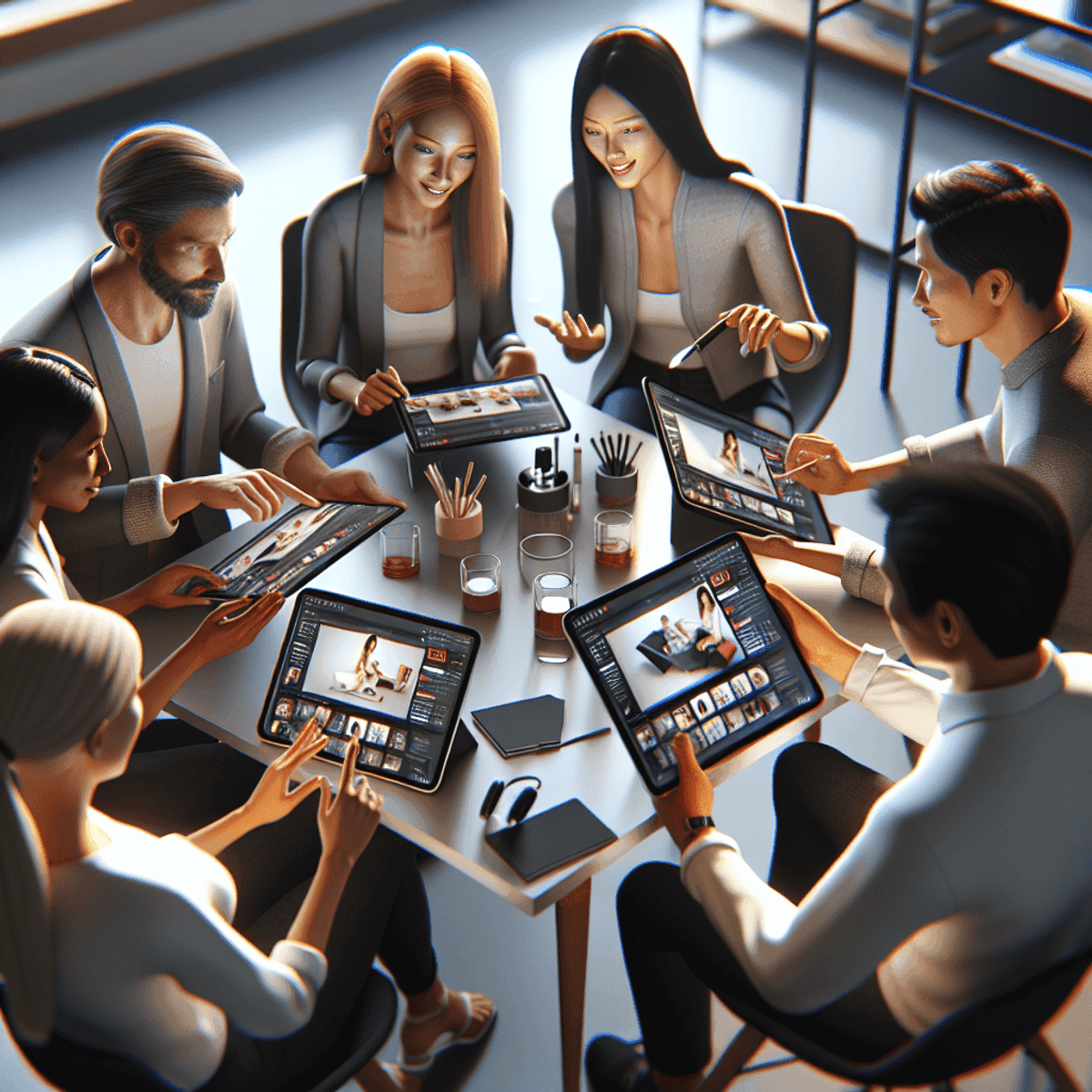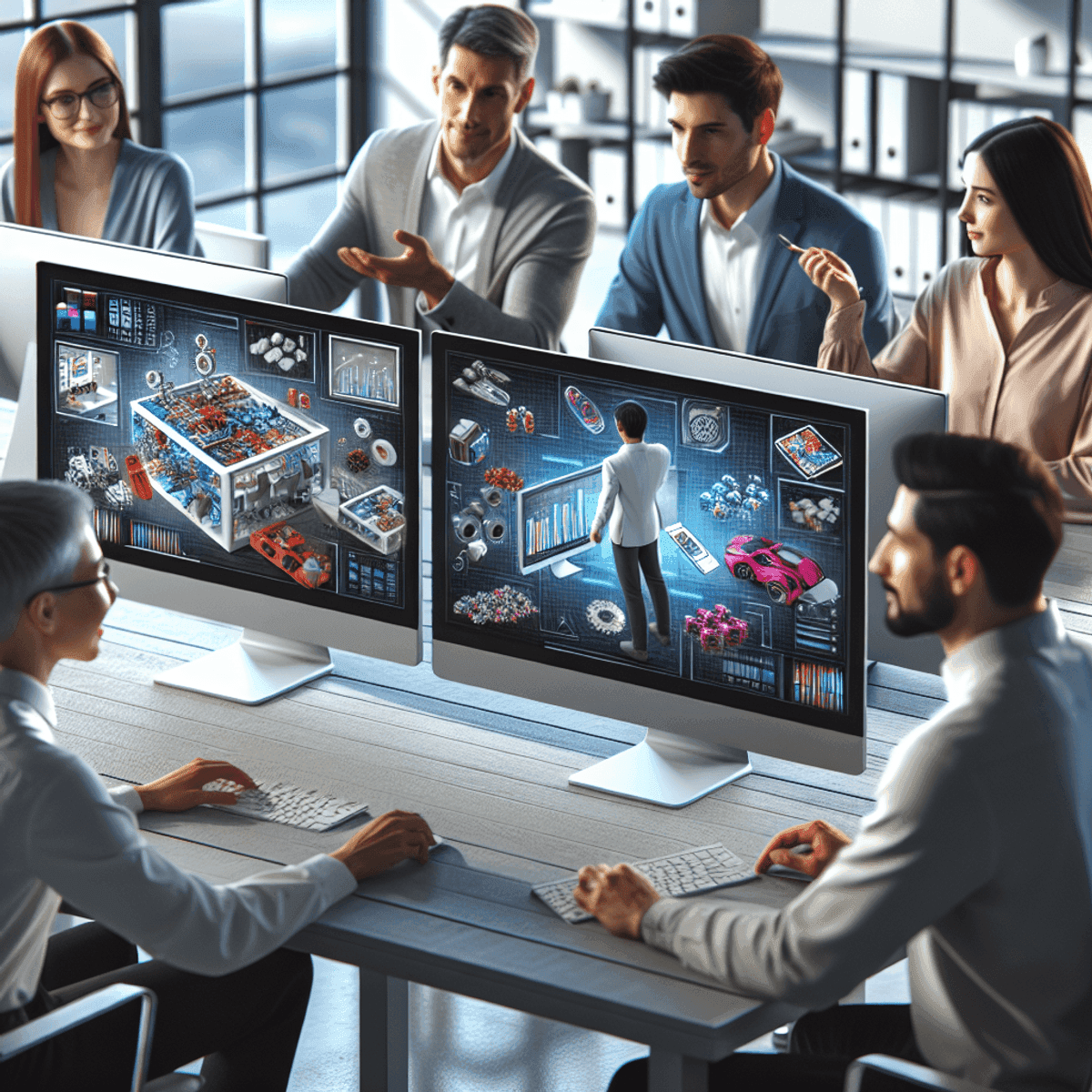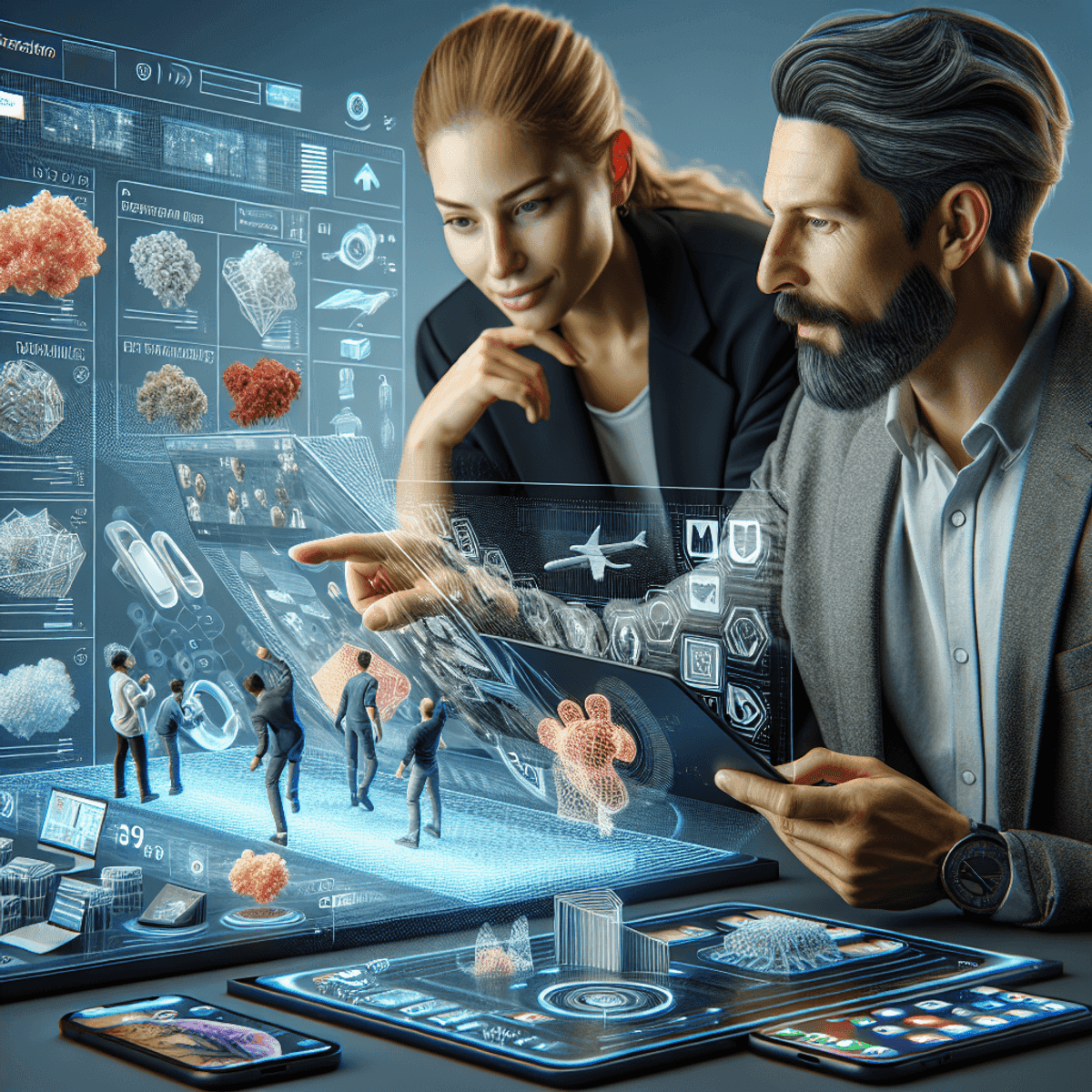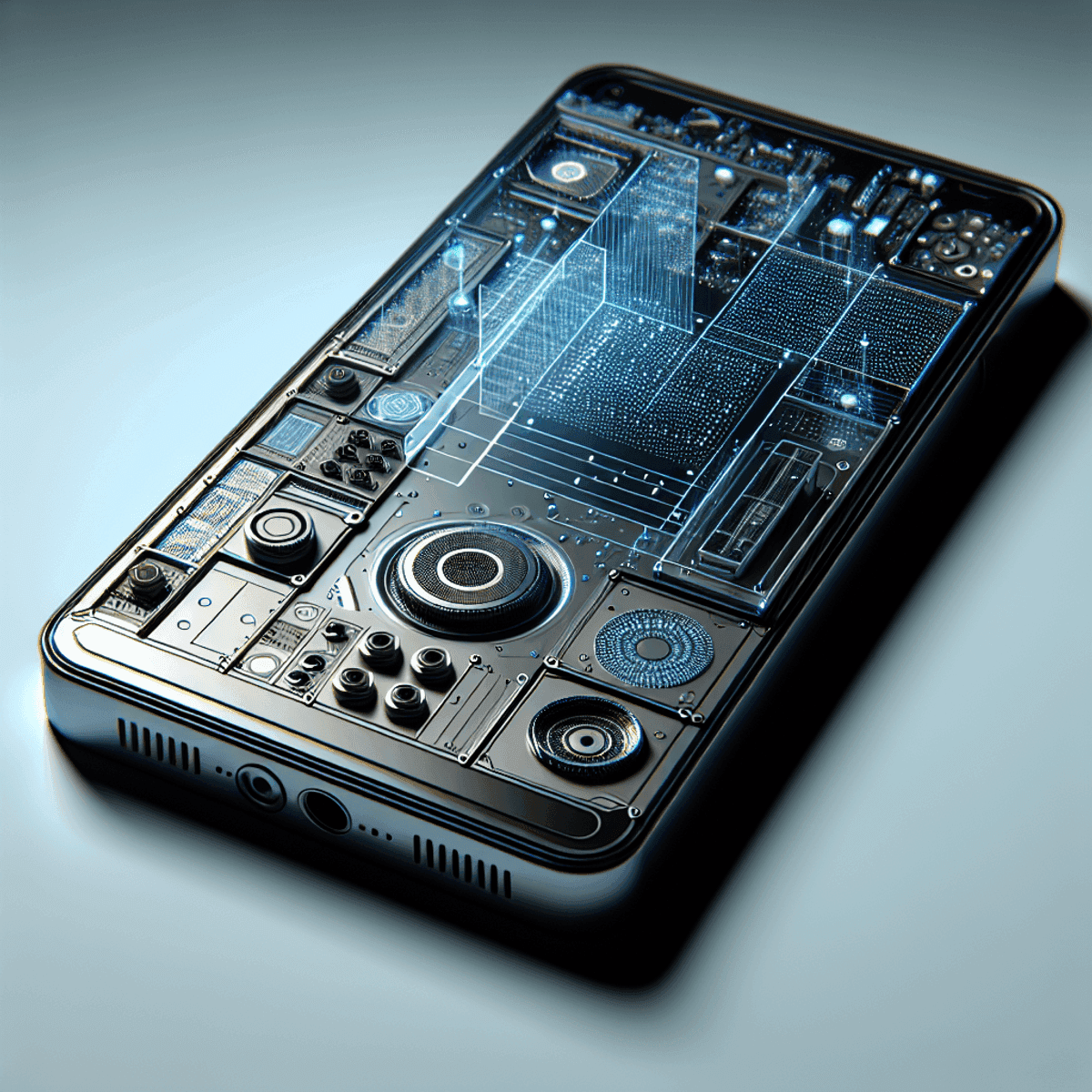In the competitive world of hardware businesses, visual content plays a crucial role in effective marketing and engaging customers. Product rendering and photography are two popular methods used to showcase products in the best possible way.
Product rendering, especially 3D product rendering, involves creating highly realistic, computer-generated images of your products. This technique offers unmatched flexibility, allowing for changes in design, color, and texture without the need for physical prototypes. Companies like Jobe Graphic specialize in this area, offering subscription models that ensure high-quality visuals with predictable costs. When choosing a service, it's important to understand how to select the right 3D rendering service for hardware products, which can greatly enhance your product visuals.
On the other hand, product photography captures real-life images of your products using cameras and lighting setups. Authentic imagery often resonates with customers by portraying luxury and high-quality attributes that are difficult to replicate digitally.
Choosing the right method can have a significant impact on your marketing strategies and how customers perceive your brand. Both approaches have their own advantages and limitations:
Product rendering excels in creative control and adaptability.
Photography offers a tangible sense of realism and authenticity.
The ideal choice depends on your specific business needs, product types, and marketing goals. Understanding these methods will empower you to make informed decisions that elevate your brand's visual storytelling.
Understanding Product Photography
Advantages of Product Photography
Product photography has been a popular choice in visual content creation, especially for hardware businesses looking to convey authenticity and superior quality. Using real images to showcase luxury and high-quality products has several benefits:
Authenticity and Trust: Authentic product photography enables businesses to present their products in a way that builds trust with consumers. Customers often prefer seeing real-world images of products as it assures them of what they can expect upon purchase. This is particularly crucial for luxury hardware items where the tactile perception and fine details significantly influence purchasing decisions.
High Realism: Photography captures intricate details, textures, and finishes that 3D rendering might struggle to replicate accurately. For instance, the gleam of polished metal on high-end kitchen fixtures or the intricate texture of a luxury door handle can be showcased compellingly through high-resolution photographs.
Emotional Connection: Real images tend to evoke stronger emotional responses. Potential buyers can visualize themselves using the product more easily when they see real-life scenarios. For example, a photograph of a beautifully designed bathroom faucet installed in an elegant bathroom setting can inspire customers by letting them envision similar aesthetics in their own home.
"A picture is worth a thousand words," rings true in product photography where each image narrates the story of quality and craftsmanship.
Limitations of Product Photography
Despite its numerous benefits, product photography comes with certain challenges that cannot be overlooked:
Cost-Intensive: High-quality product photography requires substantial investment in professional-grade cameras, lenses, lighting equipment, and studio space. These costs can quickly add up, especially for hardware businesses with extensive product lines.
Time-Consuming: Setting up shoots for multiple products involves meticulous planning, styling, and staging. Post-production editing further extends the timeline before the final images are ready for marketing use.
Limited Flexibility: Once taken, photographs lack flexibility; any changes or updates necessitate a reshoot. In contrast, 3D models can be easily adjusted to reflect new design iterations without needing another photoshoot.
Understanding these limitations helps businesses evaluate whether the advantages of authentic imagery outweigh the associated costs and efforts involved in maintaining high realism in their visual content strategy.
Limitations of Product Photography
Product photography, while providing unparalleled authenticity and realism, does come with its own set of challenges.
Cost Implications
Equipment: High-quality cameras, lenses, lighting setups, and other accessories can be prohibitively expensive.
Studio Space: Renting or maintaining a professional studio space represents a significant ongoing expense.
Post-Production: Editing software and the expertise required to perfect images add to the overall cost.
Time-Consuming Setup
Setting up for a product shoot is often labor-intensive. Positioning the product, adjusting lighting, and capturing multiple shots to get the perfect image can be extremely time-consuming.
Environmental Challenges
Factors like inconsistent lighting conditions or external noise can disrupt shoots, requiring additional time and resources to manage.
In summary, while product photography excels in delivering luxury hardware visuals, it demands substantial investment in terms of both time and money. This makes it crucial for businesses to weigh these limitations against the benefits when deciding their visual content strategy.
Exploring 3D Rendering for Hardware Businesses
Benefits of 3D Rendering
3D rendering has transformed the way hardware businesses showcase their products. This technology offers an unmatched level of creative freedom and scalability, making it a powerful tool for various marketing and design needs. Here, we explore the many advantages that 3D rendering brings to the table.
1. Creative Control
Customization Options: With 3D rendering, businesses can easily customize every aspect of the visual presentation. This includes altering colors, materials, lighting, and angles without the need for additional physical prototypes or photoshoots.
Photorealistic Visuals: Advanced rendering software can produce images that are nearly indistinguishable from actual photographs. High-resolution textures and accurate lighting models contribute to lifelike visuals that captivate potential customers.
Consistent Quality: Unlike traditional photography, which may suffer from inconsistencies due to lighting or environmental conditions, 3D rendering ensures uniform quality across all visual assets.
2. Scalability in Product Design
Rapid Prototyping: 3D models can be quickly adjusted to reflect changes in product design. This allows businesses to iterate on designs rapidly, reducing time-to-market for new products.
Versatility in Marketing Materials: Once a 3D model is created, it can be repurposed across multiple platforms—websites, brochures, advertisements—ensuring brand consistency without additional costs.
Interactive Elements: Rendered visuals can be used to create interactive elements such as 360-degree views or augmented reality (AR) experiences. These engaging features enhance customer interaction and provide a deeper understanding of the product.
3. Cost Efficiency
Reduced Long-Term Costs: While the initial investment in rendering software and training might be high, the long-term savings are significant. Reusable 3D models eliminate the need for repeated photoshoots and constant updates.
Subscription Models: Services like Jobe Graphic offer subscription-based models that provide access to dedicated artist teams at a predictable flat monthly rate. This approach simplifies budgeting and ensures ongoing access to high-quality visuals.
4. Adaptability
Multiple Outputs: A single 3D model can generate numerous outputs tailored for different media formats—from HD images for print to optimized graphics for web use.
Quick Adaptations: Changes in product design or marketing strategy can be swiftly implemented within the 3D environment without disrupting workflow or incurring additional costs.
5. Enhanced Collaboration
Remote Work Compatibility: Teams working remotely across different locations can seamlessly collaborate on projects using cloud-based rendering tools. This facilitates real-time updates and feedback loops, expediting project completion.
Client Approvals: Rendered visuals allow clients to review and approve designs before they are finalized. This reduces misunderstandings and ensures client satisfaction with the final product.
In essence, 3D rendering provides hardware businesses with a versatile toolset for producing high-quality visuals that are both cost-effective and adaptable. By leveraging these benefits, companies can not only improve their marketing efforts but also streamline their design processes.
Challenges of 3D Rendering
3D rendering is a powerful tool for creating photorealistic visuals, but it comes with its own set of challenges. One of the primary hurdles is the initial investment in software and hardware. High-quality Product Rendering Services often require advanced programs and robust computing systems, which can be costly.
Training requirements also pose a significant barrier. Teams need to develop proficiency with these tools, which demands both time and resources. This learning curve can delay project timelines and impact initial productivity.
Key challenges include:
Software Investment: Premium 3D rendering software like Autodesk 3ds Max or Blender requires substantial financial outlay.
Training Needs: Effective use of these tools necessitates extensive training, requiring businesses to either hire skilled professionals or invest in employee development programs.
Learning Curve: Teams new to 3D rendering might face steep learning curves, impacting short-term efficiency.
Despite these challenges, the creative freedom and scalability in product design offered by 3D rendering make it a worthwhile consideration for hardware businesses aiming for long-term growth and adaptability.
Comparing Product Photography and 3D Rendering: Which Method is Better for Your Hardware Business?
Aesthetic and Realism
When deciding between product photography and 3D rendering for your e-commerce listings, one of the key factors to consider is the visual quality and realism of the images. Both methods have their own strengths in this area.
Visual Quality in Product Photography
Authenticity: Product photography captures real-world images, offering a level of authenticity that can be particularly compelling for luxury and high-quality items. The tactile feel and intricate details of materials such as brushed steel or polished wood are vividly presented.
Lighting Nuances: Skilled photographers can manipulate lighting to highlight specific features, adding depth and dimension that might be challenging to achieve in a purely digital context.
Contextual Imagery: Real-world settings showcase products within their intended environment, aiding in customer understanding and desire. For instance, a photograph of a premium kitchen appliance in a modern kitchen setup can enhance its appeal.
Visual Quality in 3D Rendering
Creative Control: 3D rendering provides unparalleled creative control over every aspect of the image. Adjustments to angles, lighting, textures, and colors are made effortlessly.
Consistency: Achieving uniformity across multiple products becomes easier with 3D models. This ensures that your product catalog maintains a cohesive look, which is crucial for brand identity.
Adaptability: Quick adaptations to new designs or variations are possible without needing another photoshoot. This is especially valuable for businesses with fluctuating product lines.
Realism Comparison
Product Photography Realism:
Captures the imperfections and unique characteristics of each unit, contributing to a sense of genuineness.
Essential for items where texture plays a critical role in purchasing decisions (e.g., textiles, furniture).
3D Rendering Realism:
Advances in rendering technology now allow for hyper-realistic visuals that closely mimic real photographs.
Ideal for tech products or machinery where precision detailing is required. Features like transparent components or internal mechanisms can be showcased more effectively.
In marketing campaigns where realism is paramount yet difficult to achieve through traditional means (such as showcasing the inner workings of complex hardware), 3D rendering often proves superior. Conversely, for scenarios requiring emotional engagement through authentic representation (like luxury goods), product photography tends to excel.
Balancing these techniques based on your specific needs ensures not only aesthetic appeal but also functional effectiveness in engaging potential customers.
Cost and Efficiency
Cost and efficiency are critical when comparing product photography and 3D rendering for hardware businesses. Product photography involves ongoing expenses such as:
Equipment costs: High-quality cameras, lenses, lighting, and backdrops.
Studio space: Rental or ownership costs for a professional studio.
Setups and sessions: Time and labor for each photoshoot, including setup, shooting, and teardown.
Post-production: Editing time to ensure images meet quality standards.
In contrast, 3D rendering offers a different cost structure:
Initial investment: Software licenses and training for team members to effectively use 3D rendering tools.
Reusability of assets: Once created, 3D models can be easily reused and adapted for various marketing materials, reducing the need for repeated sessions.
Scalability: Efficiently handle fluctuating product lines without recurring costs associated with new photoshoots.
Considering these factors provides a long-term cost analysis that highlights the benefits of scalability and asset variability with 3D rendering. These advantages can translate into significant savings over time compared to the recurring expenses of product photography.
Evaluating the Cost Implications of Product Photography vs 3D Rendering
Breakdown of Costs Associated with Each Method
Product Photography:
Initial Investment: High-quality cameras, lenses, lighting equipment, and a professional studio setup.
Ongoing Expenses: Photographer fees, model costs (if applicable), studio rental fees, and post-production editing.
Per-Session Costs: Each new product requires a dedicated photo shoot, adding to the cumulative costs.
3D Rendering:
Initial Investment: Powerful computers, specialized software (e.g., Blender, Autodesk), and training for team members.
Ongoing Expenses: Software licenses, potential outsourcing to 3D artists for complex projects.
Reusability: Once created, 3D models can be reused and adapted for various marketing materials without additional shooting. For example, Jobe Graphic provides expert 3D product renders that can be easily modified for different uses.
Long-Term Financial Implications for Businesses with Fluctuating Product Lines
Product Photography:
For businesses with rapidly changing product lines, recurring photography sessions can become a significant expense. Every new product or design variation demands a fresh set of images. This ongoing need can strain budgets and extend project timelines.
3D Rendering:
Offers a cost-effective solution as digital models are easily adjustable. When products evolve, modifications can be made to existing 3D models without the need for complete re-creations. This adaptability translates to substantial savings over time.
How Subscription Models Can Mitigate Costs
Services like Jobe Graphic offer subscription-based pricing models that provide predictable monthly rates for unlimited 3D renders. This approach helps businesses manage their budgets more effectively by spreading out costs over time rather than incurring large, sporadic expenses.
Benefits of Subscription Models:
Cost Predictability: Flat monthly fees simplify financial planning.
Access to Expertise: Dedicated artist teams ensure high-quality outputs without the need for extensive in-house resources.
Scalability: Adaptable plans cater to varying project sizes and complexities.
By evaluating these factors, hardware businesses can determine which visual content method aligns best with their financial strategies and operational needs. If you're ready to elevate your product visuals with high-quality 3D renders, consider reaching out to Jobe Graphic where you can start receiving stunning visuals within just 2-3 days.
Best Practices for Visual Content Creation in the Hardware Industry
Importance of a Visual Style Guide for Brand Identity
Establishing a visual style guide is critical for maintaining a consistent brand identity in the hardware sector. This guide serves as a blueprint for all visual content, ensuring that every piece aligns with the brand's ethos and market positioning. Key components include:
Color Palette: Use specific colors that resonate with your brand message and appeal to your target audience.
Typography: Select fonts that complement your brand's tone—whether modern, traditional, or technical.
Imagery Guidelines: Define the type of images to be used, including lighting, angles, and background settings that best showcase your products.
A well-developed visual style guide helps in creating cohesive and recognizable marketing materials across various platforms, enhancing brand recall and customer trust.
Effective Techniques in Product Visualization
Leveraging both product photography and 3D rendering can significantly enhance customer experience and improve online sales. Here are some effective techniques:
High-Quality Photography: Use professional-grade cameras and lighting setups to capture detailed, high-resolution images of your products. Authentic imagery is particularly effective for showcasing luxury and high-quality items.
"Authentic product photos can create a strong emotional connection with potential buyers, highlighting the craftsmanship and quality of the products."
Dynamic 3D Rendering: Utilize 3D rendering to offer interactive experiences such as 360-degree views or customizable features. This technology allows customers to visualize the product in different settings or configurations.
Quick Adaptations: Easily modify renders to reflect new features or design changes without the need for a reshoot.
Cost Efficiency: Reuse 3D models across multiple campaigns, reducing long-term costs associated with new photography sessions.
Combining these methods can provide a comprehensive visual experience. For instance, use high-quality photographs on your e-commerce site to display the product's authenticity while integrating interactive 3D models to engage users on social media platforms.
Incorporating these best practices into your visual content strategy ensures that you not only meet but exceed customer expectations.
Case Studies & Real-Life Applications: Success Stories from the Hardware Industry
Success Stories: Kamaljit Singh's AMZ One Step
AMZ One Step, led by Kamaljit Singh, exemplifies the effective use of both product photography and 3D rendering. This visualization company specializes in creating compelling visual content for Amazon sellers. By leveraging high-quality photography for physical products and 3D rendering for conceptual items or variations, AMZ One Step provides a comprehensive visual strategy. This dual approach not only enhances the visual appeal but also ensures accurate representation of products, critical for customer trust.
Insights into Industry Trends
Several trends are reshaping visual content marketing within the hardware industry:
Increased Demand for Realistic Visuals: As eCommerce continues to grow, consumers expect realistic and detailed visuals. Both product photography and 3D rendering meet these demands, but their application varies based on product type.
Hybrid Approach Adoption: Companies are increasingly adopting a hybrid approach, blending photography and rendering to maximize benefits. This trend is driven by the need for versatility in marketing materials and rapid adaptation to product changes.
Conversion Rates Linked to Effective Visual Strategies
Effective visual strategies significantly impact conversion rates:
Higher Engagement: Products with high-quality visuals tend to attract more attention. A combination of professional photography and detailed 3D renders can lead to increased engagement on digital platforms.
Improved Sales Performance: Businesses using both methods often report higher sales. For instance, AMZ One Step has seen notable improvements in client conversion rates due to their dual-method approach.
Implementing a balanced visual strategy that incorporates both photography and 3D rendering can provide hardware businesses with a competitive edge. Through these techniques, companies like AMZ One Step demonstrate how integrated visual content can drive success in the hardware sector.
Hybrid Approaches to Visual Content Strategy in the Hardware Sector
Advantages of Combining Both Product Photography and 3D Rendering
A hybrid approach to visual content strategy offers a harmonious blend of realism and creative flexibility. By combining product photography with 3D rendering, hardware businesses can leverage the best of both worlds.
Enhanced Realism: High-quality photographs capture the tangible feel of products, showcasing textures, materials, and intricate details that resonate with consumers. When paired with 3D rendering, which excels in lighting adjustments and scene customizations, the end result is strikingly realistic visuals.
Versatility: This combined strategy allows for dynamic adaptability. Product photographs can serve as a foundation, while 3D renderings provide the ability to swiftly modify or update visual elements without reshooting.
Cost Efficiency: Investing in both methods may seem costly initially. However, it can reduce long-term expenses by minimizing the need for frequent photo sessions and enabling quick iterations through rendering adjustments.
Scenarios Where a Hybrid Approach is Particularly Beneficial
Certain scenarios highlight the advantages of integrating both product photography and 3D rendering:
Interactive Elements: Interactive product showcases benefit immensely from this hybrid approach. Static photos offer authenticity, while 3D models allow for interactive features such as 360-degree views or augmented reality (AR) experiences.
Complex Products: For hardware products with intricate designs or multiple components, initial high-resolution photographs can establish a baseline. Subsequent changes or customizations are efficiently managed through 3D renderings.
Marketing Campaigns: Seasonal promotions or limited-edition releases often require rapid visual updates. A hybrid strategy ensures that base images remain consistent while supplemental visuals are quickly generated via rendering.
Incorporating both techniques creates a comprehensive visual content strategy that aligns with diverse marketing needs. This duality not only enhances brand storytelling but also significantly optimizes customer engagement and satisfaction.
The Future of Visual Content Creation in the Hardware Industry: Trends to Watch Out For
The world of visual content creation is changing quickly, thanks to new technology and changing consumer expectations. Here are some important future trends in visual content creation that hardware businesses should pay attention to:
1. Augmented Reality (AR) and Virtual Reality (VR)
These technologies are becoming more accessible, allowing businesses to create immersive experiences that enable customers to interact with products in a virtual space.
2. Interactive 3D Models
Enhanced interactivity will become a staple, providing customers with the ability to rotate, zoom, and explore products in detail directly from their devices.
3. AI-Driven Automation
Artificial Intelligence will play a significant role in streamlining the rendering process, reducing turnaround times and enabling more personalized content creation.
4. Sustainable Practices
As environmental concerns grow, there's an increasing focus on sustainable content production methods. Digital rendering reduces waste compared to traditional photography setups.
5. Hyper-Realistic Textures and Lighting
Achieving near-photographic realism through advanced rendering techniques will be crucial for creating compelling product visuals.
This shift in how visual content is created shows that hardware businesses need to stay updated on these trends. By doing so, they can stay competitive and provide engaging experiences for their customers.
Conclusion: Make an Informed Choice Between Product Rendering and Photography for Your Hardware Business!
Choosing between product rendering and photography is crucial for improving your brand's visual quality. Each method has its own advantages that cater to specific business requirements.
Product photography is great for showcasing the authenticity of luxury and high-quality products. It's perfect for businesses that want to emphasize craftsmanship and intricate details. However, you can't ignore the expenses involved with professional equipment, studio space, and time-consuming setups.
On the other hand, 3D rendering gives you unparalleled creative control and scalability. It allows for quick changes, making it ideal for product lines that require frequent updates. While the initial costs of software and training can be steep, the long-term savings and flexibility often make up for it.
Key Considerations
Aesthetic and Realism: Decide whether your product benefits more from the genuine feel of photography or the versatile accuracy of 3D rendering.
Cost and Efficiency: Compare the ongoing expenses of photography with the reusability of 3D models.
For some hardware businesses, using both methods together may yield the best results by combining their strengths. This approach can boost customer engagement through interactive visuals while maintaining high-quality standards.
Ultimately, understanding your business's specific needs will help you make an informed decision between product rendering and photography. This ensures that your visual content strategy aligns with your brand's goals.
What are the key advantages of using product photography for a hardware business?
Product photography provides unparalleled authenticity, allowing customers to see real-world images of products. It can create a strong emotional connection with potential buyers and enhance brand trust through visual representation.
What are the limitations of product photography?
Despite its benefits, product photography can be time-consuming and labor-intensive to set up. It also faces environmental challenges such as inconsistent lighting conditions and external factors that may affect the quality of images.
How does 3D rendering benefit hardware businesses?
3D rendering offers creative control and customization options, allowing businesses to adjust designs quickly. It is scalable for rapid prototyping and can lead to long-term cost efficiency by reducing recurring expenses associated with physical product shoots.
What are some challenges associated with 3D rendering?
While 3D rendering is powerful for creating photorealistic images, it requires significant initial investment in powerful computers and specialized software. Additionally, there may be a learning curve for teams unfamiliar with the technology.
What future trends should hardware businesses watch out for in visual content creation?
Key trends include the rise of augmented reality (AR) and virtual reality (VR), interactive 3D models, AI-driven automation for content creation, sustainable practices in design, and advancements in achieving hyper-realistic textures and lighting.
by
Ayham Ayoub
Last updated











